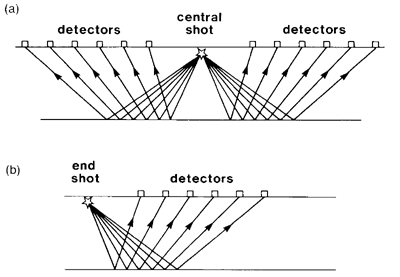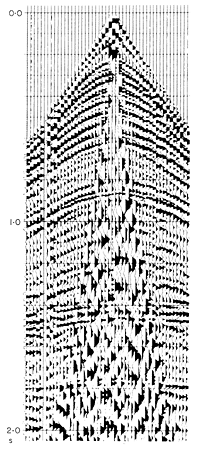Survey geometry¶
Multichannel data collection¶
First consider the source-receiver geometry. The geometry can be “split spread” in which case there is a central shot with receivers on both sides, or a “single-ended spread” in which the receivers are always on one side of the source. Split spreads are common in land surveys; single-ended spreads are common in marine surveys.

Fig. 62 Shot-detector configurations used in multichannel seismic reflection profiling .(a) Split spread, or straddle spread. (b) Single-ended spread [1]¶

A split spread seismic record is shown above. The seismic traces all belong to a single source and hence this is referred to as a “Common Source Gather”. The first arrivals are direct or critically refracted arrivals. Reflection hyperbolae from numerous boundaries are observed, right. The strong energy in the triangular central portion is ground roll caused by surface waves. It masks the reflection events.